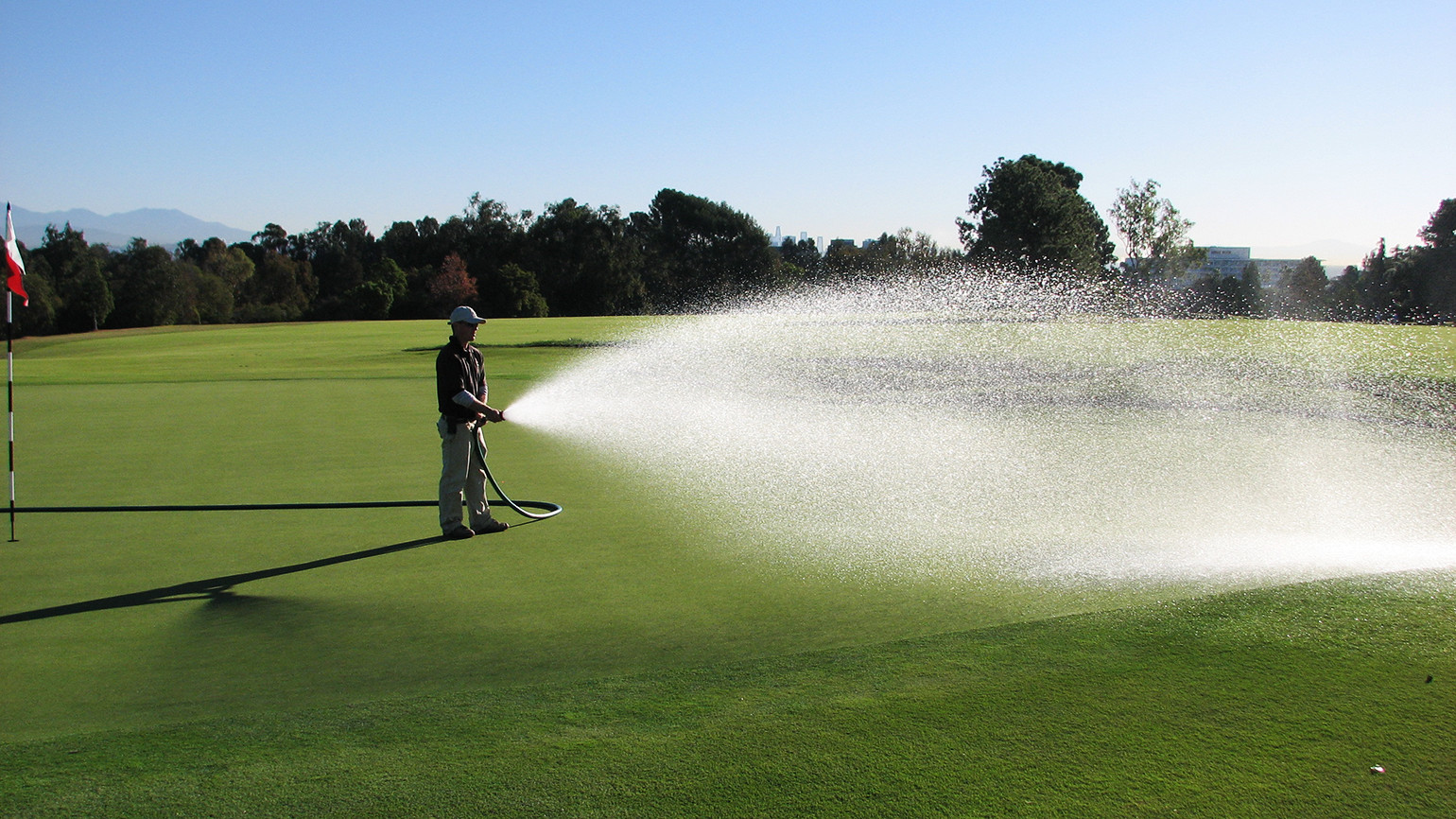-
Shopping Tools
-
Care & Maintenance
-
About
-
Dealer Login

A typical American golf course uses around 312,000 gallons of water daily to maintain its greens and fairways. However, water usage can vary greatly depending on the climate and location of the course. In arid regions, water consumption can surpass 1 million gallons per day, highlighting the significant impact of weather and geography on golf course irrigation needs.
Golf courses are known for their lush green landscapes, but maintaining them requires a substantial amount of water. On average, a typical American golf course consumes about 312,000 gallons of water per day. This water is used primarily for irrigation to keep the grass healthy and the course visually appealing. Despite the large amounts of water required, golf course irrigation represents a small percentage of the total water usage in the U.S., amounting to less than 0.5% of the daily total of 408 billion gallons used across the country.
Water usage on golf courses is not uniform across the country. Locations in arid and semi-arid regions, such as the Coachella Valley in California, use much more water compared to courses in wetter climates. In regions like Palm Springs, a single golf course can consume over 1 million gallons of water per day. This amount of water is equivalent to what a typical American family of four would use over a span of four years. Conversely, golf courses in the Northeast, where rainfall is more abundant, typically use much less water on a daily basis.
The amount of water used on a golf course depends on several factors, including climate, grass type, and course size. Golf courses located in dry areas with little rainfall, like the Southwest, require more water to keep the grass healthy and green. In contrast, courses located in regions with higher rainfall need less irrigation. Additionally, the type of grass used can also impact water usage. Traditional grasses such as Kentucky bluegrass require more water to maintain than drought-resistant varieties like Bermuda grass, which is increasingly being planted in areas with water scarcity.
As water costs continue to rise and the environmental impact of water usage becomes a growing concern, many golf courses are adopting more sustainable practices. One of the key trends is the use of recycled water for irrigation. Some golf courses have installed systems that treat and recycle wastewater, reducing their reliance on fresh water. Additionally, many courses are transitioning to drought-resistant grasses, which require less water to thrive. These sustainable practices are helping golf courses reduce their water usage and environmental footprint.
In most cases, golf courses do not rely solely on municipal water supplies. Instead, many golf courses use water from wells, ponds, or nearby bodies of water for irrigation. By drawing from these sources, golf courses can reduce their dependence on local water systems, which helps mitigate the impact of high water consumption on surrounding communities. In regions where water scarcity is a concern, golf courses are increasingly looking for ways to conserve and manage their water usage more effectively.
The frequency of irrigation on a golf course depends on a variety of factors, including weather conditions, soil type, and the specific needs of the grass. Typically, golf courses are watered at least once or twice a day during hot summer months. However, this can vary depending on the climate. In drier regions, golf courses may need to water more frequently, while in areas with regular rainfall, watering can be reduced. Modern irrigation systems allow golf courses to water more efficiently, using technology like weather sensors and soil moisture sensors to optimize water usage and minimize waste.
Water costs for golf courses can vary significantly depending on location. Courses in arid areas, such as Arizona or Southern California, often face higher irrigation costs due to the need for large amounts of water. In contrast, golf courses in the Northeast or regions with more rainfall generally incur lower water costs. For example, in some parts of the Southwest, golf courses may pay significantly more for water than their counterparts in wetter climates. These costs are an important consideration for course owners and operators, especially as water prices continue to rise in many regions.
As the demand for water increases and climate change continues to impact water availability, water conservation has become a key priority for golf courses. Many golf courses are investing in water-efficient technologies, such as smart irrigation systems, which can automatically adjust watering schedules based on weather conditions. These systems help ensure that the course receives the right amount of water without over-irrigating, reducing waste and conserving precious resources.
While water conservation is essential, golf courses can also take steps to reduce their environmental impact in other areas, such as transportation. Driving electric golf carts around the course instead of using gas-powered carts can significantly reduce carbon emissions and help courses become more eco-friendly. Electric golf carts are quiet, efficient, and contribute to a more sustainable golfing experience.
